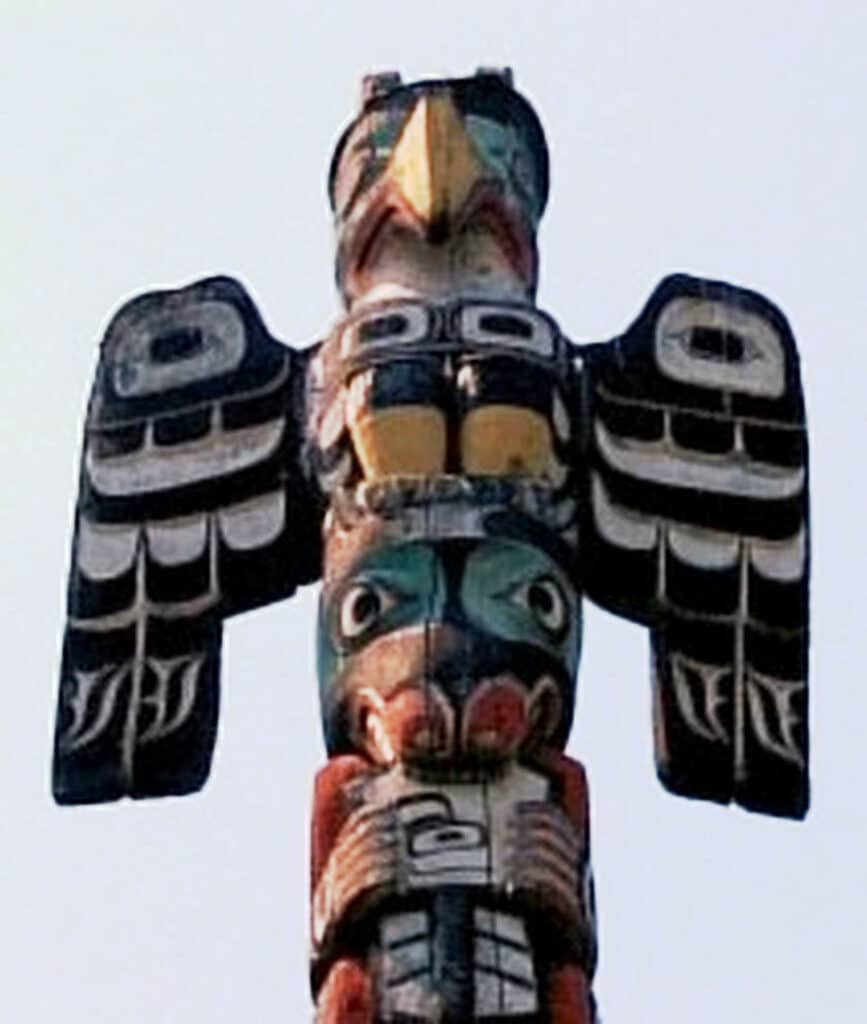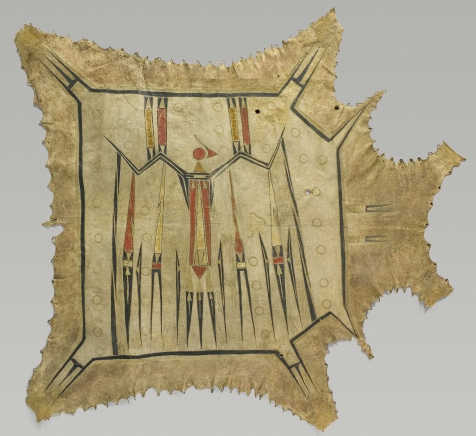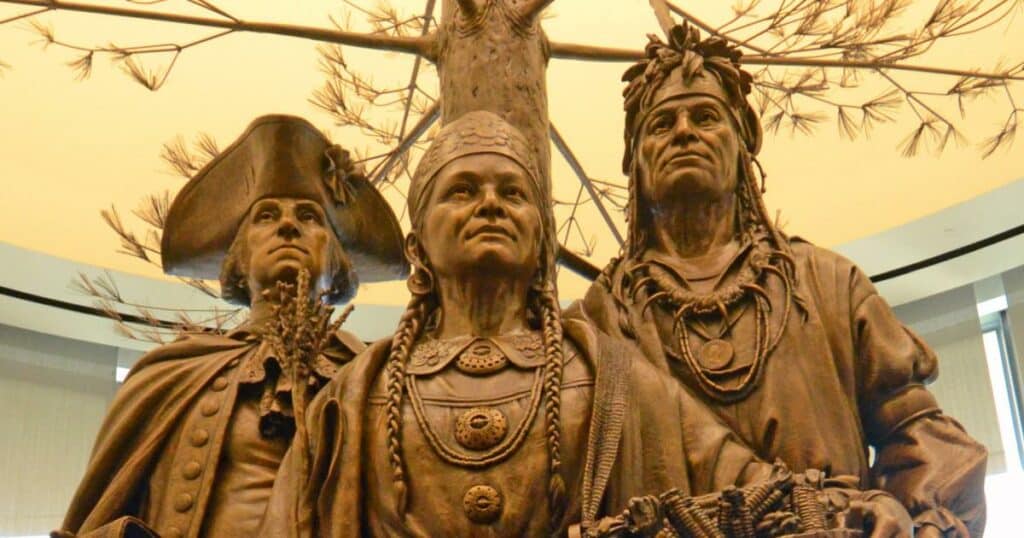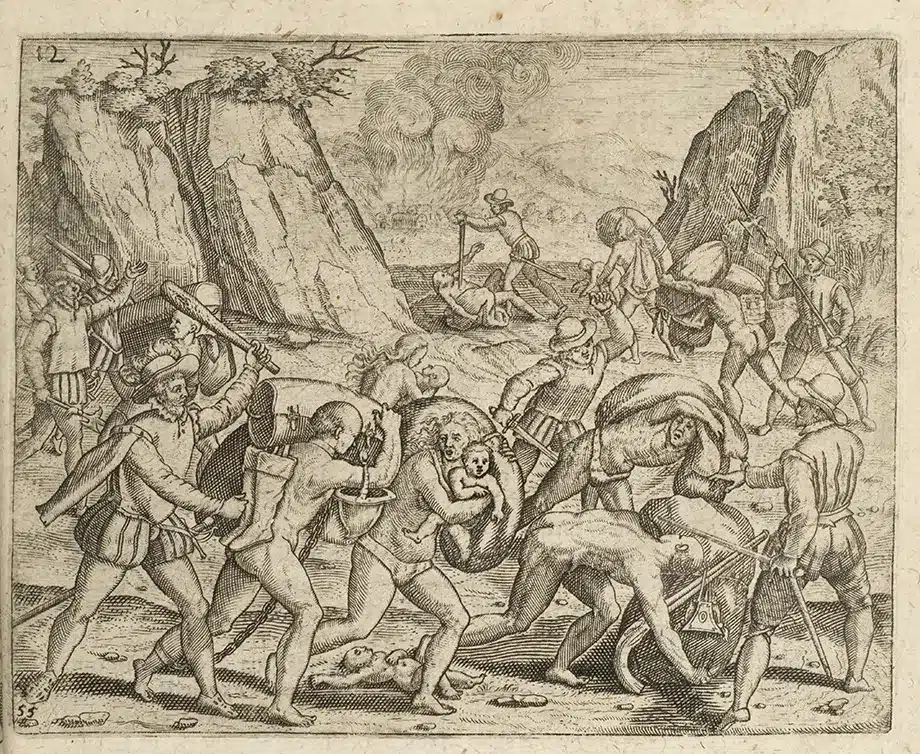For centuries, Native American folklore has been filled with tales of powerful and majestic creatures, each imbued with its own unique symbolism and significance.
But perhaps none are as awe-inspiring as the Thunderbird, a legendary creature that is said to bring thunder and lightning with the beating of its mighty wings. Across many different tribes and geographical regions, the Thunderbird has been depicted as a divine messenger, a protector, and a symbol of strength and power.
Even today, the Thunderbird continues to captivate and inspire people around the world with its timeless allure and rich cultural legacy, giving this piece of indigenous folklore a far-reaching impact on both traditional and contemporary culture.
The Thunderbird as Described in Folklore
According to Native American folklore, the Thunderbird is a powerful spirit that takes the physical form of a great bird. It is often depicted like other birds of prey with a large, curved beak, impressive horns, and a massive wingspan said to be twice the length of the traditional war canoe.
The Thunderbird is often depicted with other, lesser spirits, like falcons or eagles, but even alone it is still incredibly powerful. Legend says that the beating of its wings creates thunder, while it sends lightning flowing from its eyes or by ‘throwing’ lightning snakes to the ground. These snakes have wolf or dog-like heads and are sometimes called the Thunderbird’s dogs.
Along with their striking, dramatic powers, Thunderbirds are also life-giving spirits that control storm clouds to bring spring rains. As beings of the upper world, they are in a constant state of war with the malevolent serpents and aquatic spirits of the underworld, like the killer whale.
This perpetual conflict between the Thunderbirds and their adversaries is a recurring theme in Native American folklore. Its unique combination of size, strength, and power make it a symbol of awe and wonder throughout Native American culture.
The Algonquians
The Thunderbird appears across all displays of Native American folklore: from the totems of the Pacific Northwest to the oral traditions of the Great Lakes cultures, to the art of the Northeast tribes.
And it is there, in the areas of eastern Canada and the northeastern United States, that many of the Algonquian tribes and cultures would tell tales and create art of the legendary Thunderbird.

Algonquian mythology places the Thunderbird as a powerful figure that governs the upper world. As noted, this tradition sees the Thunderbird in a constant battle with the underworld, in the form of the water panther or Great Horned Serpent, which controls it.
To protect humans from the underworld creatures, the Thunderbird casts down lightning bolts at them, constantly at war – with humans situated right in the middle. The Thunderbird’s importance to Algonquian mythology is especially highlighted by their belief that these creatures were the ancestors of the human race and played a role in the creation of the universe.
However, even within Algonquian folklore, differences arise between tribes and cultures, each with its own special, unique relationship to the great spirit.
The Menominee
The Menominee of Wisconsin and the Great Lakes region are an Algonquian-speaking tribe, also with their own tales of the Thunderbird.
According to Menominee mythology, the Thunderbirds reside on a floating mountain in the western sky, where they control the rain and hail. They are fierce warriors and enjoy engaging in battles and heroic acts.
The Thunderbirds are known for their ongoing conflict with the great horned snake, the Misikinubik, which they fight to protect humans from being devoured. In Menominee culture, the Thunderbirds are considered messengers of the Great Sun, a powerful deity revered for his role in creating the universe.
The Ojibwe
The Ojibwe of the Northern Plains also have myths about the Thunderbird. They speak of how it was created by Nanabozho, a cultural hero and shapeshifting spirit, to battle underwater spirits. The Ojibwe believe that the Thunderbird also serves as a moral enforcer, punishing those who break moral rules.
According to their tradition, the Thunderbirds lived in all four directions and arrived with the other birds in the springtime, staying until the fall, when the most dangerous season for the underwater spirits had passed.
Researchers have even discovered small figurines among Ojibwe artifacts that depict Thunderbird’s wings and other spirit beings, revealing the importance of these beliefs in their culture.
The Thunderbird in Other Cultures
The Thunderbird motif is far from limited to just the Algonquian and Menominee. It is also present in Siouan-speaking tribes such as those inhabiting the Great Lakes area.

The Ho-Chunk people believe that a vision of a Thunderbird during a solitary fast can foretell a man’s rising to chiefdom, while the Winnebago believe that the Thunderbird can grant extraordinary abilities to people.
In Lakota tradition, the Thunderbird protects humans from dangerous reptilian monsters, known as Unktehila. Some tribes believe that Thunderbirds are shapeshifters and could appear as boys who speak backward.
Additionally, in many of these cultures, Thunderbirds are considered highly sacred forces of nature, while others view them as powerful animals. The Lakota in particular refer to the Thunderbird as ‘wakinyan’ and believe that it protects the pure of heart and honest people from the destructive forces of life.
Modern Interpretations of the Thunderbird
The legend of the Thunderbird holds great significance to many indigenous cultures across North America and its image has been interpreted and represented to reflect this significance.
Some modern scholars and historians have suggested that indigenous Thunderbird stories come from the discovery of pterosaur fossils by Native Americans. However, the typical design elements of the motif within different tribal groups across the continent appear distinct from the prehistoric flying reptile.
Although such modern interpretations attempt to explain the origins of the myth, caution is advised, especially when interpreting written sources, as they have likely been filtered through European viewpoints, leading to watered-down versions of the original stories.
Despite the challenges of translating and understanding these traditions, the Thunderbird continues to inspire contemporary Native American art, literature, and culture. Its legacy is an important reminder of the rich and diverse history of Native American peoples and their enduring connections to the natural world.
References
Alex, Bridget. “Rulers of the Upper Realm, Thunderbirds Are Powerful Native Spirits.” Audubon Magazine, National Audubon Society, 30 Nov. 2020, https://www.audubon.org/news/-rulers-upper-realm-thunderbirds-are-powerful-native-spirits.
Boas, Franz. “The Thunder-Bird a Tillamook Legend.” Pacific Northwest Seismic Network, 1898, https://pnsn.org/outreach/native-american-stories/thunderbird-and-whale/thunderbird-and-whale-stories/the-thunder-bird-a-tillamook-legend.
Lankford, George E. Native American Legends of the Southeast: Tales from the Natchez, Caddo, Biloxi, Chickasaw, and Other Nations. University of Alabama Press, 2011.
Leung, Clint. “Thunderbird: A Symbol of Power, Strength and Nobility.” Cuyamungue: The Felicitas D. Goodman Institute, 15 Apr. 2020, https://www.cuyamungueinstitute.com/articles-and-news/thunderbird-a-symbol-of-power-strength-and-nobility/.
“Thunderbird.” Encyclopædia Britannica, Encyclopædia Britannica, Inc., 2 Mar. 2023, https://www.britannica.com/topic/thunderbird-mythological-bird.

